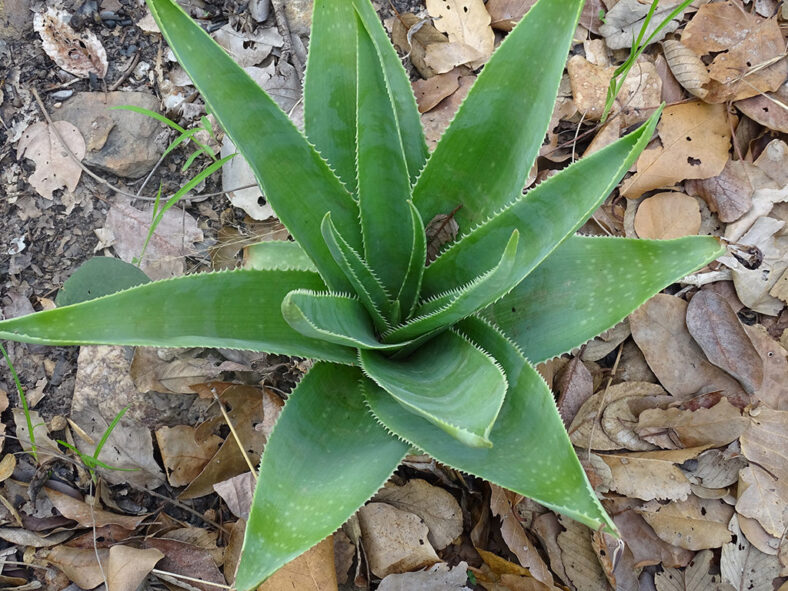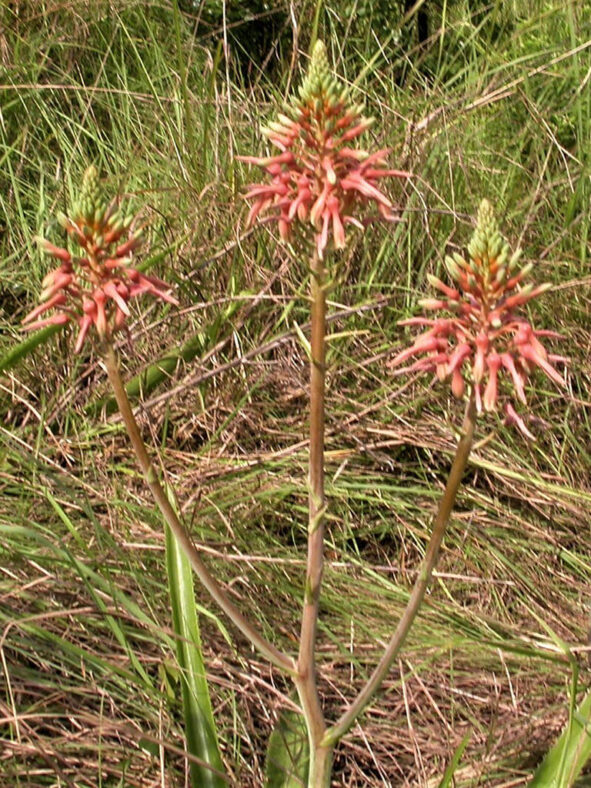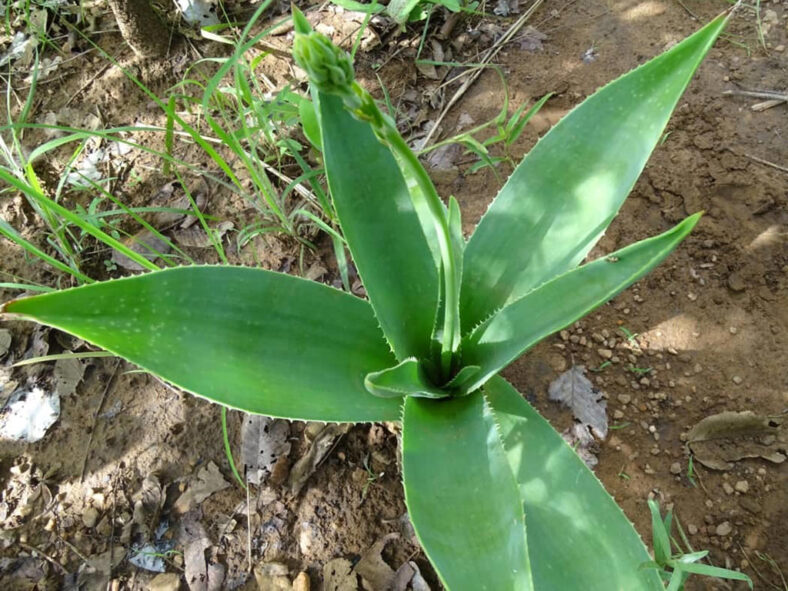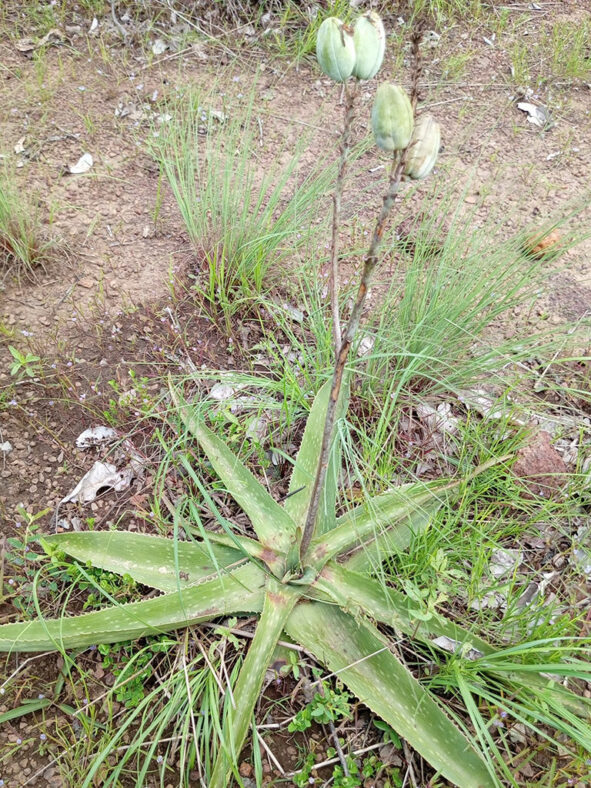Aloe buettneri is widely used for various local medicinal purposes. It was first described in 1905 by Alwin Berger, based on a specimen collected in Togo by Oskar A. R. Büttner.
Scientific Name
Aloe buettneri A.Berger
Common Name(s)
West African Aloe, Western Aloe
Synonym(s)
Aloe agavifolia, Aloe barteri var. dahomaensis, Aloe barteri var. sudanica, Aloe congolensis, Aloe paludicola
Scientific Classification
Family: Asphodelaceae
Subfamily: Asphodeloideae
Genus: Aloe
Etymology
The specific epithet "buettneri" (pronounced BEWT-ner-ee) honors Oskar Alexander Richard Büttner (1858-1927), a German botanist and mineralogist who was involved in the exploration of the Congo Basin.
Origin
Aloe buettneri is widely distributed across West Africa, from Mali and Ghana to Nigeria, and also south to western Congo, Angola, and northern Namibia. It typically grows in grassy places within moister savanna areas.
Description
Aloe buettneri is a small succulent that forms a stemless, typically solitary rosette of fleshy, deltoid leaves with sharply toothed margins. The rosettes grow from a bulbous rootstock and can reach a height of up to 34 inches (85 cm). The leaves are apple green, with obscure lines on the upper surface and sometimes some whitish spots towards the base. They can measure up to 32 inches (80 cm) in length and 4.8 inches (12 cm) in width.
In the spring and summer, Aloe buettneri produces flowers ranging from greenish-yellow to bright red. The flowers are arranged in erect inflorescences that can grow up to 3.3 feet (1 m) tall and usually have 3 to 5 branches. The racemes are nearly head-like to conical, and the cylindrical flowers can reach a length of 1.8 inches (4.5 cm). The fruits are yellow-green-brown, with few transverse ribs, and contain pale, grey, winged seeds. They can grow up to 18 inches (4.5 cm) long and 1 inch (2.5 cm) in diameter.

How to Grow and Care for Aloe buettneri
Light: When growing Aloe buettneri indoors, place it in a window with plenty of bright, indirect light. Rotate the pot once or twice a week to ensure all sides of the plant receive equal lighting. Outdoors, the plant prefers light shade, especially during the hottest parts of the day.
Soil: Great drainage is essential for growing this plant because too much moisture for an extended period can cause root rot. Use commercial soil for succulents, or make your own well-draining mix.
Temperature: When temperatures drop below 50°F (10°C), it's time to bring this plant inside. It tolerates heat fairly well but will not survive a hard frost. Aloe buettneri grows best in USDA Plant Hardiness Zones 10a to 11b, with average minimum winter temperatures ranging from 30°F to 50°F (- 1.1°C to 10°C).
Watering: This plant requires regular watering but can tolerate short periods of drought. Water deeply, but only when the soil is completely dry to the touch. Do not let water stand in the rosettes. Reduce watering during the winter months.
Fertilizing: Although it generally does not require fertilizer, Aloe buettneri will benefit from extra nutrients. Use a water-soluble fertilizer diluted to half-strength.
Repotting: Repot only as needed during spring. Pick a container that is one size larger and has drainage holes.
Propagation: Since Aloe buettneri has a typically solitary habit, it can only be propagated from seeds. For best results, sow seeds during the warm months.
Learn more at How to Grow and Care for Aloe.
Toxicity of Aloe buettneri
Aloe buettneri is safe for people, as it is non-toxic. However, it can be mildly to moderately toxic to pets.
Links
- Back to genus Aloe
- Succupedia: Browse succulents by Scientific Name, Common Name, Genus, Family, USDA Hardiness Zone, Origin, or cacti by Genus
Photo Gallery
Click on a photo to see a larger version.


